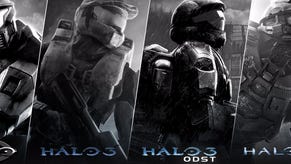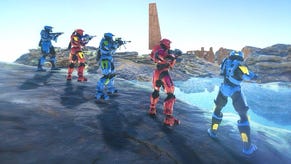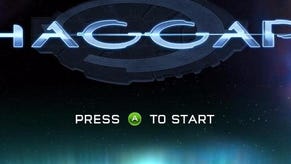Tech Analysis: Halo 4 at E3
Digital Foundry assesses the new graphics tech devised by 343 Industries.
After a few years of offering only the smallest hints at what it's been working on, 343 Industries finally came clean at this year's E3. No more CG trailers, no more offline rendered "in-engine" cinematics - instead, actual Halo 4 gameplay was revealed, and with it our first chance to get a look at the new tech operating in real-time on standard Xbox 360 hardware.
Microsoft chose Halo 4 to commence proceedings at its E3 press conference and it's easy to see why - it was by far and away the strongest title in its entire presentation. This is perhaps not surprising. When the platform holder realised that its relationship with Bungie was drawing to a close, it founded 343 Industries - an in-house, Halo-specific studio that quickly set out to recruit a wealth of top-tier games developmental talent, including ex-Space Shuttle program coder and nuclear physics award winner Corrinne Yu, who acts as principal engine architect - along with her husband, senior art director Kenneth Scott, previously responsible for defining the look of many of id Software's greatest games.
Over the last three to four years, the newly formed 343 Industries team has substantially rewritten the entire Halo engine bequeathed to it by Bungie, resulting in a game that builds upon the foundations of its predecessors in terms of core gameplay but also receives a state-of-the-art visual revamp. Halo: Reach got close, but the new game is the first outing for the Master Chief that plays out at native 720p. The ghosting temporal anti-aliasing solution found in Bungie's swansong has also gone in favour a more modern post-process anti-aliasing solution, almost certainly NVIDIA's FXAA. But beyond the basic set-up of the framebuffer, there's a whole lot more going on with Halo 4's visuals, and lighting, environment detail and effects work reaches new heights for the series.
Factoring in the timelines and the fact that commonalities in specific visual effects with Halo: Reach are few and far between, it may well have been the case that there was some degree of overlap between the development of the two games. It's almost as if both 343 and Bungie ventured off in different directions at some time in the past.
We see similar levels of detail in the principal models between the two games, but the art style in Halo 4 is a completely new, fresh take, and environmental detail seems considerably richer. The HDR lighting in Reach also appears to have been swapped out in favour of an entirely new implementation, a touch heavy on bloom and featuring some accomplished effects work. For example, light shafts in most games only appear when the sun is on-screen. Not so in Halo 4, where "god rays" are cast no matter where the principal light source may be and aren't just fake geometry as we saw in Halo 3. Curiously, we see a couple of features in Reach that don't make their way over to the new game: we could find no evidence of screen-space ambient occlusion (SSAO) in the footage revealed to date, while motion blur - even camera-based - seems non-existent.
"While remaining familiar in terms of core mechanics, Halo 4 represents a fundamental new take on the series from a brand new developer with much to prove in the wake of Bungie's departure."
However, enhancements elsewhere are rich indeed. The initial engine-driven cut-scene and the introduction to the playable segment demonstrates that the technology has lost none of its sense of scale - the enormous sphere construct that alarms Master Chief at the beginning of the demo accurately casts a mammoth shadow, while surrounding environments appear to feature richer detail, plus a more natural, perhaps richer take on lighting. Atmospheric rendering - essential in accurately representing scale in huge environments - also sees a more impressive implementation than what we saw in Reach.
Light and shadow are really what impress with the claustrophobic jungle environment revealed at E3: direct and ambient light is realistically rendered onto surfaces, and onto the human characters we see midway through the demo. Self-shadows derived from environmental light sources are also rendered onto the view weapon. This is something Bungie experimented with in Reach (as early footage from the first "ViDoc" demonstrates), but removed from the final code. It's present and correct in Halo 4, but as the Master Chief travels at speed through the jungle occasionally it does seem to manifest almost like a flicker - which may be one of the reasons Bungie ended up removing it.
Other elements we noticed prompt some speculation: certain enemies in the demo disintegrate (in somewhat spectacular fashion), rather than leaving corpses behind - a decision that may allow for the free-flow of enemy entities into the gameplay arena, Gears of War-style. There's also the hint of a Halo CE-style multi-factional conflict as we see humans, Covenant, plus the Forerunners in the mix. In combination with Halo's expansive gameplay arenas, we would hope for good things here: Halo 3 specialised in epic vehicular battles, Reach concentrated more on ground warfare - it'll be interesting to see the approach that 343 goes for with the new game.
Smaller tweaks we enjoyed in the E3 demo included the revisions to Master Chief's HUD, plus the edges of his helmet encroaching ever so slightly into the field of view. It gives a subtle link between the man in the armour we see in the cut-scenes and the standard FPS viewpoint, though it does enhance the feeling that the positioning of the view weapon is perhaps a little strange, suggesting that Chief is constantly running about in an "iron sights" pose.
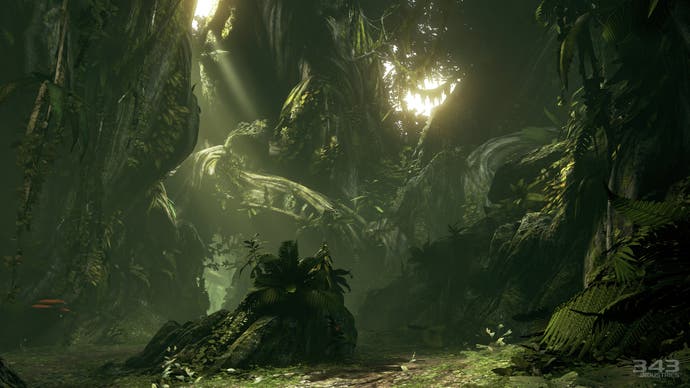
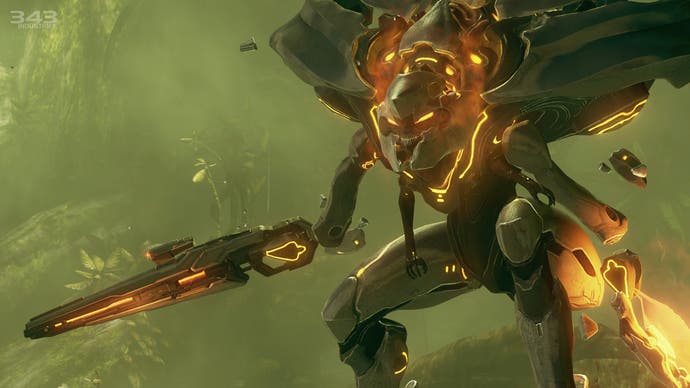
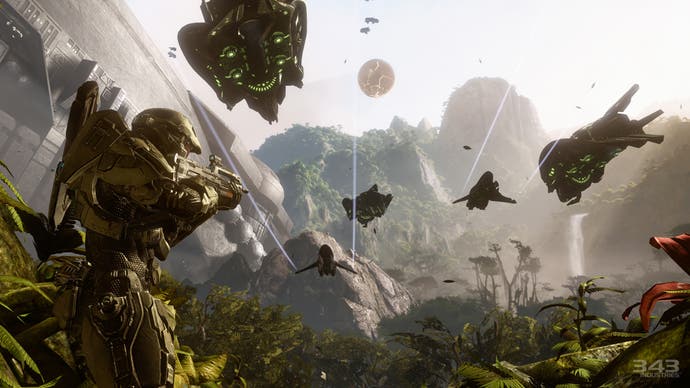

Bearing in mind that we're just months away from the release of Halo 4, what stands out from the E3 showing is just how little of the actual game we've seen. 343 has given us the merest taster of single-player campaign content, instead focusing on the multiplayer elements: three maps were showcased at E3, and new modes such as Infinity Slayer were unveiled, where players are scored on their overall effort, not their frags. Enhanced loadouts, a new ordinance meter and power-ups were also in evidence.
"We're seeing combat evolved once more with a state-of-the-art rendering engine, a fresh take in terms on the game's artwork and brutal new challenges via the Forerunner opponents."
A focus on the multiplayer is a smart move at this point: the longevity of the Halo titles is defined by this element, and in the frozen Longbow stage, we do get a chance to see what the new engine is capable of with the series' signature open areas, where vehicular combat comes to the fore. What we saw of the single-player game was deliberately more of a teaser: we got a taste of the new enemy types in the form of the new ultra-aggressive Promethean warriors, a preview of the new take on Forerunner weaponry, and a few strong hints of what the new engine brings to the table.
However, it seems that 343 doesn't want to reveal too much and is looking to keep the campaign as spoiler-free as possible pre-release. The lack of campaign content revealed thus far has prompted some worry though, and there is the concern that the linear "corridor" we saw in the demo isn't quite in keeping with the expansive nature of previous Halo single-player campaigns, something that 343 staff have been quick to play down by offering context on how the demo relates to the full game. In short, the message appears to be that we ain't seen nothing yet.
Overall impressions of Halo 4 seem very promising indeed. Those who have grown fatigued of the franchise formula may be underwhelmed by the lack of radical change and reinvention, but this is Microsoft's number one console property and it was always unlikely that we would see any fundamental changes to the core mechanics. Instead, we're seeing combat evolved once more with a state-of-the-art rendering engine, a fresh take in terms on the game's artwork and brutal new challenges via the Forerunner opponents. Spartan Ops - which seeks to integrate multiplayer into the Halo mythology for the first time, with new content released regularly released - also looks like a winner.
There were legitimate concerns that Halo as we know it may have ceased to be in the wake of Bungie's departure, but in 343 Industries, the game appears to be in good hands. Certainly, the tech impresses - and if this is what the team can achieve on seven-year-old hardware, the opportunities for Master Chief on the upcoming Durango are mouth-watering...





